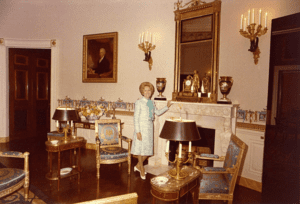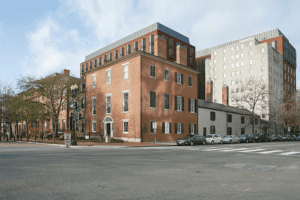History of National Preservation Month
While we at the Heritage Foundation of Williamson County live and breathe historic preservation all year long, the United States Congress designated the month of May as a time to celebrate preservation in 1973.
Preservation Month originally began as Preservation Week, but the National Trust for Historic Preservation decided in 2005 to extend the celebration to an entire month to highlight the many historic places across our country and to share the economic and social benefits of historic preservation.
We love taking the time to focus on sharing our work over the decades to save places and stories that make our community unique. But historic preservation has not always been a prevailing mindset in many places, including Williamson County, as old homes and buildings have been torn down in the past to modernize.
Preservation Closer to Home
Even in historic downtown Franklin, which has been an accredited National Main Street Community since 1984, business owners in the 1960s and 1970s tried to compete with shopping malls by hiding their building facades with aluminum slipcovers or tearing off dated marquees and woodwork.
In what was nicknamed the “malling of Main Street,” metal awnings were installed over the downtown sidewalks to replicate the indoor shopping experience at a mall.
Over the years, lost downtown structures include the Wilbur Corn house at the corner of 5th Avenue and Bridge Street, which was replaced in the 1960s with an Exxon station. The demolition of the Wilbur Corn house became the catalyst in the formation of the Heritage Foundation of Williamson County in 1967.
It’s not a surprise that demolition is often seen as an option, since old buildings can be expensive and tricky to repair and restore. They often come with outdated plumbing and electrical infrastructure that must be completely replaced or millwork that can only be duplicated by specifically skilled carpenters.
Showcasing Our Sense of Identity

First Lady Patricia Nixon in the restore Blue Room, first floor of the White House, 1972. Image courtesy of the Richard Nixon Presidential Library and Museum, National Archives and Records Administration, 1972.
But those with a heart for historic preservation know that saving those old buildings is worth the trouble. A town’s old buildings themselves tell a story of all people and activities that took place within, the heroic and the painful. Historic places, like Main Streets, give us a sense of place that attracts the interest of visitors and gives residents something to share. Telling every story makes us all ambassadors for our communities.
When First Lady Patricia Nixon read the Presidential proclamation at the 1973 awards luncheon celebrating National Preservation Week, she said: “As the pace of change accelerates in the world around us, Americans more than ever need a lively awareness of our roots and origins in the past on which to base our sense of identity in the present and our directions for the future.”
Today, First Lady Patricia Nixon’s words from the 1973 Presidential proclamation still hold true. Preservation builds stronger communities by unlocking the potential of what we may all do to preserve place, promote prosperity and growth, foster equity, and encourage long-term sustainability.
>> To Leave Your Mark on Williamson County, visit www.williamsonheritage.org/LeaveYourMark.
Article written by Jill Burgin, Director of Advocacy and Government Relations, Heritage Foundation of Williamson County.
(Header Photo: The Historic Decatur House in Washington D.C. c1820. On May 8, 1973, First Lady Patricia Nixon read President Nixon’s National Preservation Week proclamation at a luncheon and presented preservation awards. the house was entrusted to the National Trust for Historic Preservation in 1961. In 2010, the National Trust for Historic Preservation and the White House Historical Association entered a co-stewardship arrangement to maintain the house and its collections. It now serves as the David M. Rubenstein National Center for White House History. Image courtesy of the White House Historical Association.)
